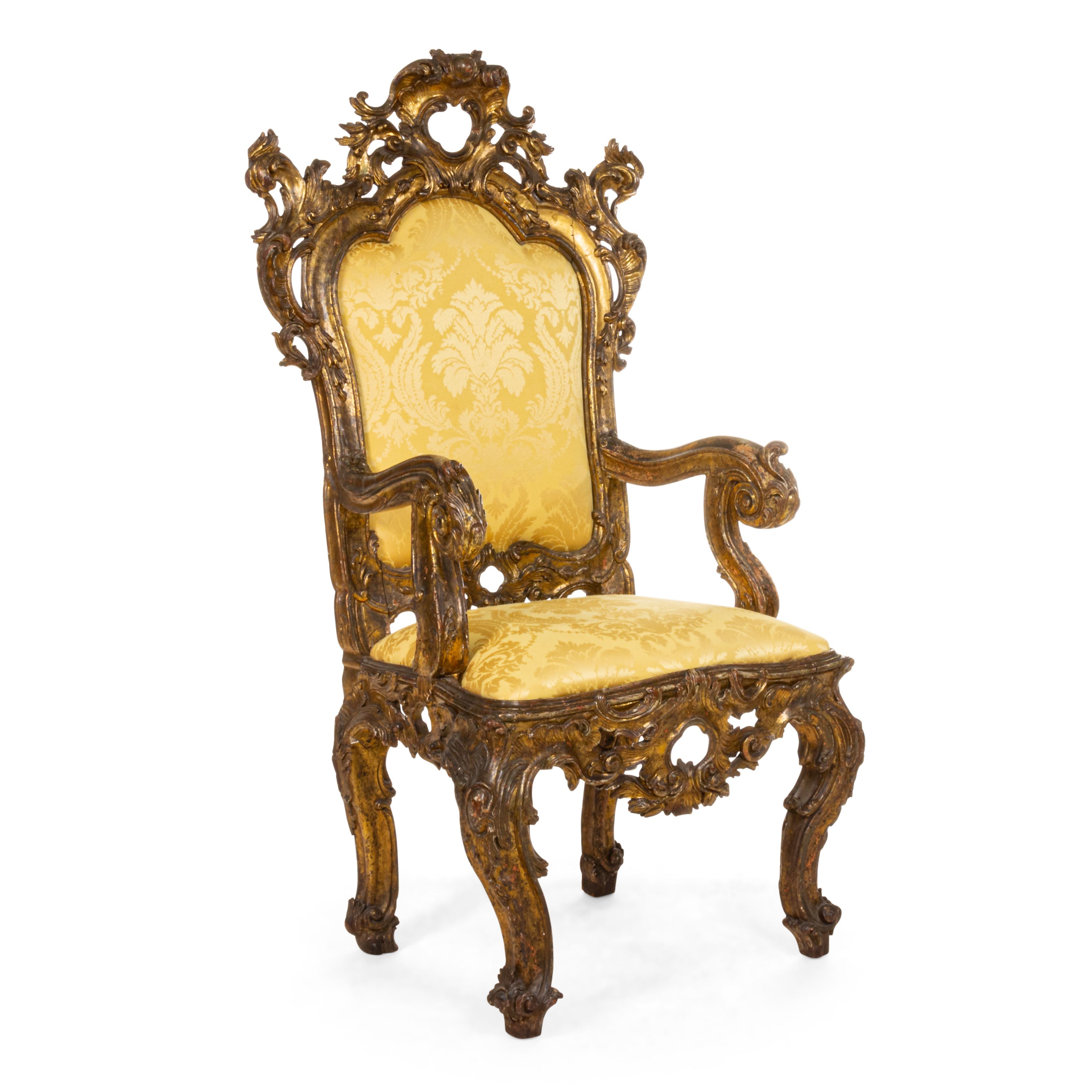X
{{ modalTitle }}
PLEASE FILL IN THE REQUIRED FIELDS.X
X
{{ modalTitle }}
Choose one of the options below.X
ITEM SUCCESSFULLY
ADDED TO PROJECT
Italian Rococo Gold Damask Throne Chair
 Italian
Italian Rococo
Rococo Seating
Seating Armchairs, Club/Wing/Misc Chairs
Armchairs, Club/Wing/Misc Chairs
Newel Warehouse
32-00 Skillman Ave
Long Island City NY - 11101
 (212) 758-1970
(212) 758-1970
Italian Rococo Gold Damask Throne Chair

Newel Warehouse
32-00 Skillman Ave
Long Island City NY - 11101
 (212) 758-1970
(212) 758-1970
 Seating
Seating Armchairs, Club/Wing/Misc Chairs
Armchairs, Club/Wing/Misc ChairsRococo
Rococo is an artistic movement in French design originating in the 18th century after Baroque. It is notable for asymetrical styles and tended to be over-ornamented. The name is derived from the French words rocaille and coquille rock and shell, both prominent motifs in this decoration.
Slip seat
A style of chair seat in which an upholstered seat loosely rests, unattached, in a rabbeted chair frame. It can be easily lifted out, making reupholstery much easier.
Damask
A linen, cotton, rayon, or silk fabric with a reversible jacquard weave. Damasks are woven on a jacquard loom using predominantly monotone fibers and a combination of weaving techniques most commonly satin and twill variants creating a tone on tone pattern that is produced by the contrast of matte and reflective surfaces. Prior to the invention of the jacquard loom in the early 1800s, damasks were woven by hand and considered a luxury fabric, but the loom's ability to produce bulk yardage allowed for more widespread access to damask fabrics within middle-class households in the 19th Century.
Rococo
Rococo is an artistic movement in French design originating in the 18th century after Baroque. It is notable for asymetrical styles and tended to be over-ornamented. The name is derived from the French words rocaille and coquille rock and shell, both prominent motifs in this decoration.
Slip seat
A style of chair seat in which an upholstered seat loosely rests, unattached, in a rabbeted chair frame. It can be easily lifted out, making reupholstery much easier.
Damask
A linen, cotton, rayon, or silk fabric with a reversible jacquard weave. Damasks are woven on a jacquard loom using predominantly monotone fibers and a combination of weaving techniques most commonly satin and twill variants creating a tone on tone pattern that is produced by the contrast of matte and reflective surfaces. Prior to the invention of the jacquard loom in the early 1800s, damasks were woven by hand and considered a luxury fabric, but the loom's ability to produce bulk yardage allowed for more widespread access to damask fabrics within middle-class households in the 19th Century.
Rococo
Rococo is an artistic movement in French design originating in the 18th century after Baroque. It is notable for asymetrical styles and tended to be over-ornamented. The name is derived from the French words rocaille and coquille rock and shell, both prominent motifs in this decoration.
Slip seat
A style of chair seat in which an upholstered seat loosely rests, unattached, in a rabbeted chair frame. It can be easily lifted out, making reupholstery much easier.
Damask
A linen, cotton, rayon, or silk fabric with a reversible jacquard weave. Damasks are woven on a jacquard loom using predominantly monotone fibers and a combination of weaving techniques most commonly satin and twill variants creating a tone on tone pattern that is produced by the contrast of matte and reflective surfaces. Prior to the invention of the jacquard loom in the early 1800s, damasks were woven by hand and considered a luxury fabric, but the loom's ability to produce bulk yardage allowed for more widespread access to damask fabrics within middle-class households in the 19th Century.

















